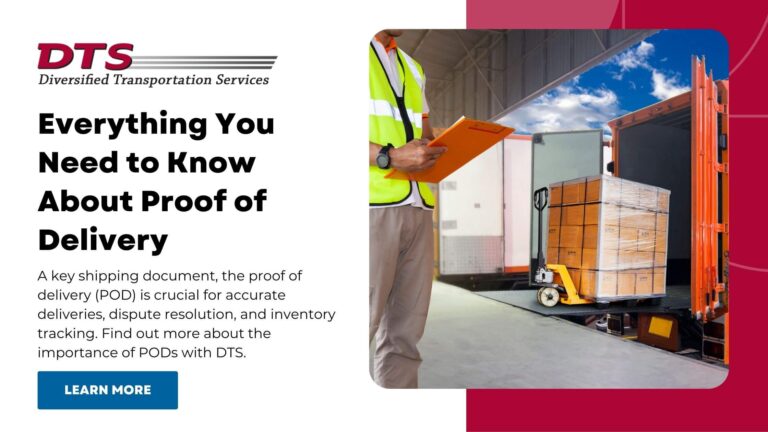
Shipping freight involves a lot of complicated and time-consuming paperwork. That’s why understanding the function of each document involved in the shipment will make the whole process smoother, saving you time and effort. One of those key documents is the proof of delivery (POD).
Below, we explore what these documents are used for, why they're important, and offer tips on how to use them effectively.
Proof of delivery is a legal document that indicates a shipment has been correctly delivered to its intended recipient. It records all key delivery details, including the date and time of delivery, the person who received the shipment, and a list of the items delivered. It serves as an essential record for all parties involved in the shipment process.
Whether you're a distributor or supplier, maintaining a comprehensive record using PODs is crucial to safeguarding your company from potential liabilities associated with deliveries.
One of the essential pieces of paperwork used for shipments (alongside the bill of lading and terms and conditions), the proof of delivery serves three main purposes.
As the proof of delivery includes an account of all items delivered to the recipient, it acts as a cargo receipt, ensuring everything has been delivered as expected. This is one of the reasons why this paperwork is essential. It may be requested by insurance companies for liability reasons, especially if something is amiss.
It also provides details about weight, quantities, origin, dimensions, and other shipment information.
Ensuring that the freight has arrived and follows the specifications of both parties is critical. As the recipient must sign the proof of delivery, it acts as evidence that the recipient not only received the freight as per the contract but that they approved the condition in which it arrived too. This can be an invaluable tool when resolving freight claims surrounding the fulfillment of contracted carriage.
A proof of delivery record can be used as a title to goods or products, tracking both when the goods were received and accepted by the recipient, and when ownership was transferred from the shipper to the receiver.
Again, this is critical to establishing ownership and liability for the goods. If disputes arise, it helps provide a paper trail and history of ownership for the delivered products.
One of three key documents in the shipping process, a proof of delivery can be used to:
PODs are particularly important if high-value items are being shipped or if the cargo needs to be delivered by a specific time or date.
There are two types of proof of delivery records: digital and physical.
The electronic proof of delivery is (unsurprisingly) the modern and preferred way of keeping track of a POD. You can use an app or online service to track your POD records, although email and PDFs are also suitable. Parties typically use a digital proof of delivery when the shipment is relatively small.
A physical POD, on the other hand, is used for larger deliveries where there is a greater chance of error. That's because a pen and paper require someone to manually go through the inventory, which is akin to using a fine-tooth comb.
It is generally accepted that physical proof of delivery records are more reliable, even if they take longer to send and generate.
While the proof of delivery provides some details about the cargo, it is mainly used as confirmation that the shipment has been delivered to its specified recipient. A bill of lading, on the other hand, outlines the terms of a shipment, including its origin and destination, the type of goods being shipped, and their value. It is also legally binding and is seen as a title of the goods, enabling the carrier to maintain possession of the shipment until payment arrangements have been completed.
A bill of lading is required when dealing with large shipments as a way to protect the shipper and carrier. It doesn’t replace the POD but instead works alongside it.
Whenever you're signing a proof of delivery, here are some tips to keep in mind:
Remember, to file a damage claim, you have to provide notice within 9 months to the carrier. If you have discovered damage to your freight that was not apparent at the time of delivery, you only have 5 days after delivery to bring these concealed damage claims to the carrier’s attention. Documenting everything at the time of delivery and inspecting your products will help speed up the process.
If you have something to ship, why not work with a transportation provider like DTS? We help small to medium-sized businesses manage their transportation thanks to our proactive customer service team, depth of industry knowledge, easy-to-use shipment management platform, reliability, and our ability to provide the best value for our clients' transportation dollars.
If you have any questions about proof of delivery, get in touch with our team of experts today.
Whether you're a company looking to improve one facet of your supply chain, your entire supply chain, or simply looking for a transportation and logistics consultation, we can help.